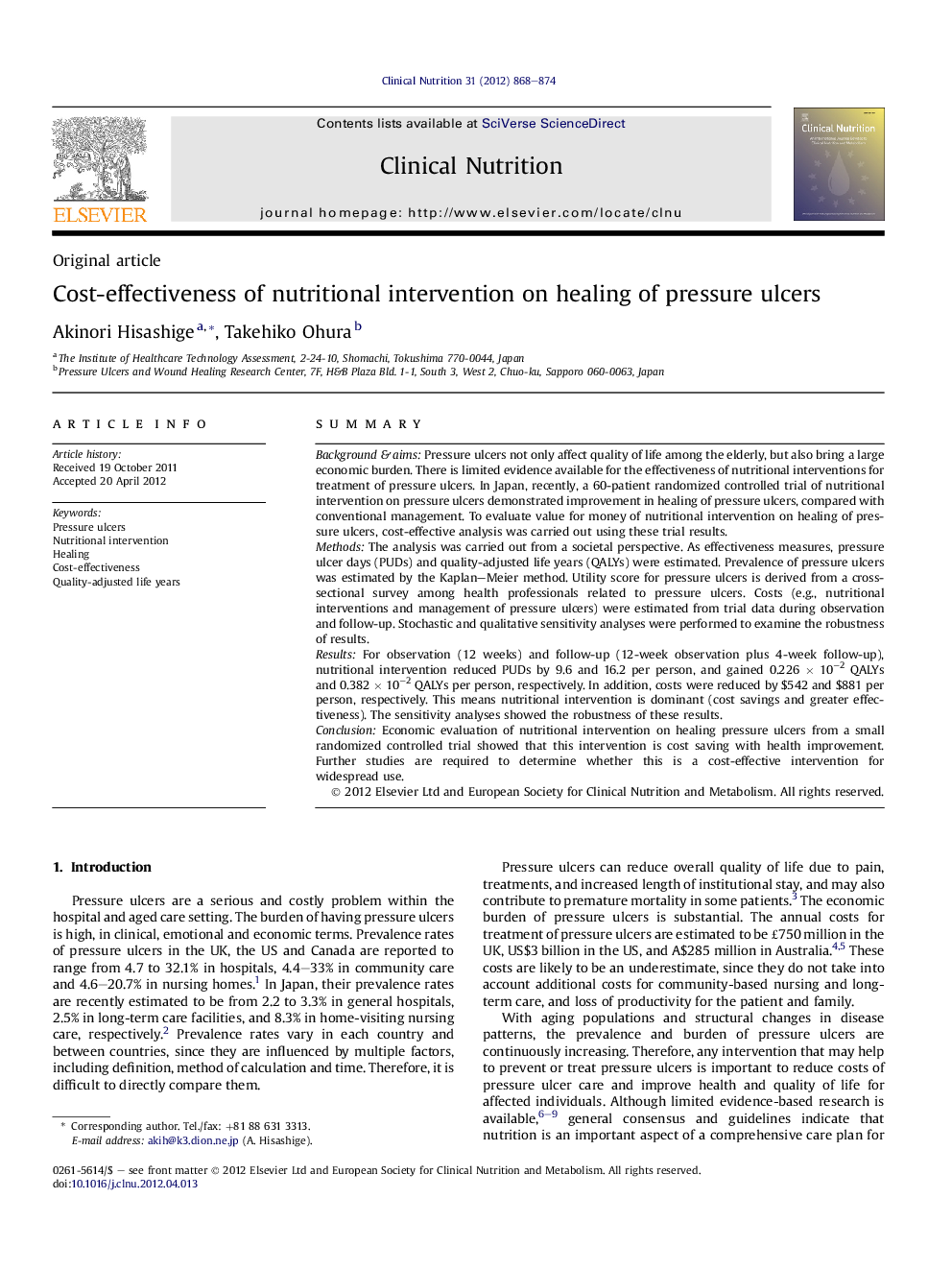| کد مقاله | کد نشریه | سال انتشار | مقاله انگلیسی | نسخه تمام متن |
|---|---|---|---|---|
| 2683015 | 1142600 | 2012 | 7 صفحه PDF | دانلود رایگان |
SummaryBackground & aimsPressure ulcers not only affect quality of life among the elderly, but also bring a large economic burden. There is limited evidence available for the effectiveness of nutritional interventions for treatment of pressure ulcers. In Japan, recently, a 60-patient randomized controlled trial of nutritional intervention on pressure ulcers demonstrated improvement in healing of pressure ulcers, compared with conventional management. To evaluate value for money of nutritional intervention on healing of pressure ulcers, cost-effective analysis was carried out using these trial results.MethodsThe analysis was carried out from a societal perspective. As effectiveness measures, pressure ulcer days (PUDs) and quality-adjusted life years (QALYs) were estimated. Prevalence of pressure ulcers was estimated by the Kaplan–Meier method. Utility score for pressure ulcers is derived from a cross-sectional survey among health professionals related to pressure ulcers. Costs (e.g., nutritional interventions and management of pressure ulcers) were estimated from trial data during observation and follow-up. Stochastic and qualitative sensitivity analyses were performed to examine the robustness of results.ResultsFor observation (12 weeks) and follow-up (12-week observation plus 4-week follow-up), nutritional intervention reduced PUDs by 9.6 and 16.2 per person, and gained 0.226 × 10−2 QALYs and 0.382 × 10−2 QALYs per person, respectively. In addition, costs were reduced by $542 and $881 per person, respectively. This means nutritional intervention is dominant (cost savings and greater effectiveness). The sensitivity analyses showed the robustness of these results.ConclusionEconomic evaluation of nutritional intervention on healing pressure ulcers from a small randomized controlled trial showed that this intervention is cost saving with health improvement. Further studies are required to determine whether this is a cost-effective intervention for widespread use.
Journal: Clinical Nutrition - Volume 31, Issue 6, December 2012, Pages 868–874
